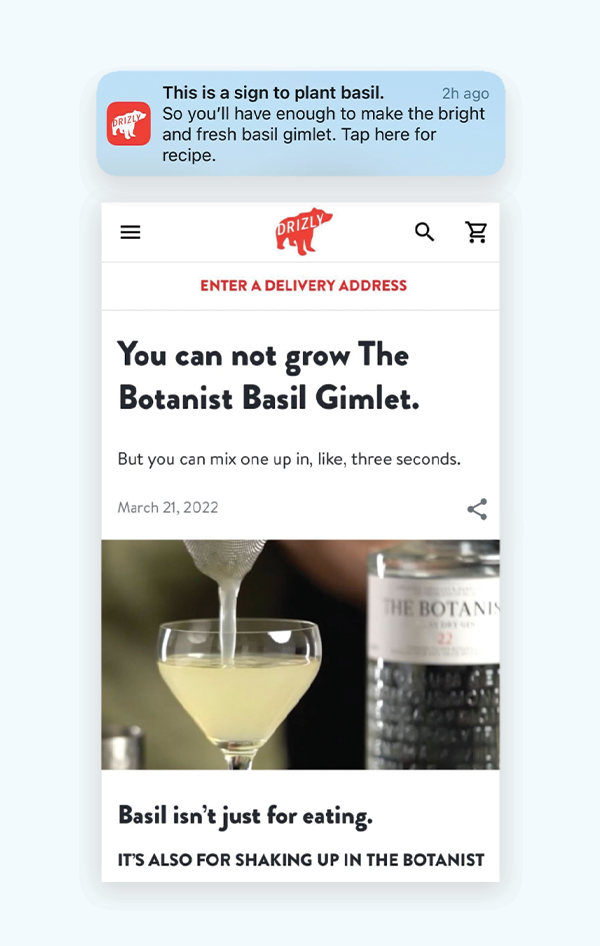Marketing is no longer a one-way street. Shouting prices through a TV screen or plastering ads on every billboard in town can’t be the only way your brand attempts to improve customer engagement. Today, to develop the most mutually beneficial marketing strategies, brands have to talk with customers, not at them.
Customer engagement sits at the core of most marketing strategies. Moving customers through the funnel to purchase and become loyal brand advocates requires connecting with customers in a way that continuously brings them back into the fold.
But, attention spans are shrinking. According to Forbes, in 2000, the average attention span was a whopping 12 seconds and, when last measured in 2018, has fallen to eight seconds. Eight. You only have a handful of seconds to get customers interested.
Shrinking attention spans aren’t meant to scare you, they’re meant to inspire you. Brands are being forced to think differently about customer engagement. The four principles below will help you capture a chunk of those eight seconds.
1. Make It Easy
With all of the brands and all of the various marketing channels those brands can use to communicate, customers are constantly being pulled in multiple directions. Everyone is fighting for those eight seconds. To separate yourself from the pack, you have to provide the path of least resistance.
Clear CTAs, deep links, and cross-channel user recognition are all examples of simplifying the customer experience. If a customer opens an email featuring a sale your brand is having, for example, but isn’t sure where to click to get to the sale—or clicks the only featured CTA but it doesn’t lead to the sale—they’re going to bounce. Another brand is sure to provide an easier experience, so why would customers bother with a confusing one?
Who does it well? Alcohol delivery platform, Drizly. Drizly is known for their clever subject lines and push notifications, but they know that copy isn’t always enough to prompt customer engagement. Drizly highlights certain products (like women-owned brands, for example) in their push notifications and then, once clicked, the notification leads users to the page featuring the items mentioned. In the below example, Drizly mentions a gimlet recipe and then the push notification takes the user to a web browser and redirects them to said recipe.


Drizly provides a deep link in the push notification, leading users directly to related content.
2. Make It Worthwhile
To improve customer engagement, the customer has to get value out of their interaction with your brand. The last thing you want is for a customer to receive your marketing message and think, “who cares?” It may seem like an impossible undertaking to make every marketing message appeal to every unique customer, since wants and needs are different for each person, but with marketing personalization, it’s not.
READ MORE: Curious about personalization? Check this out.
Personalized marketing inherently adds value for each customer. For customers, when the messaging is designed specifically for them, there’s no more sifting through offers and ignoring push notifications. With dynamic content fields that link to user IDs, marketing technology can automate messaging based on customers’ past behaviors. This customizable content increases the likelihood of customer engagement. In fact, according to a report from SmarterHQ, “72% of customers say they now only engage with marketing messages tailored to their interests.”
3. Make It Fun
Fun doesn’t necessarily mean your brand tosses digital confetti every time a customer interacts with you. To us, fun is synonymous with gamification. Your brand needs to have some level of interactivity that the customer wants to explore.
Think about a loyalty program. That’s a perfect example of gamification. Customers have to participate to earn points to reach a certain level. Then, once the level is reached, there is some kind of reward gifted to the customer. There’s an element of achievement and accomplishment added into the customer experience. It draws customers in and it’s wholly based on their own experience. In a report from Digital Marketing World Forum, they point out that “60% of consumers said they would be more likely to buy from a brand if they enjoyed playing a game with it.”
Who does it well? Starbucks. Making up between 40 and 50% of Starbucks’ total revenue, the awards program not only promotes customer engagement, but it promotes purchases as well. Our friends at Talon.One point out, “The Starbucks loyalty program certainly owes some of its success to clever use of gamification.” Customers collect stars for certain orders and can then redeem those stars for certain rewards. Caffeine? More like Caffun.
4. Make It Real
Lastly, we can’t forget about authenticity in marketing. Yes, the name of the game is getting customers to engage with your brand, but we want the interaction to be positive and a step in building a long-lasting relationship. Customers are no longer okay with an amorphous, faceless corporation doling out coupons and the flashiest new products. Customers want to know that there’s a person, or people, on the other end of the promotional email you just sent.
Customers want to know the brands they support are authentic in their missions. “Customers have a sense of self that comes from brands they support, so knowing they support brands that are genuine and authentic makes them feel good about their choices.” By staying consistent and true to your brand, you’ll increase customer engagement.
Establish Customer Engagement as a Priority
If you put customers at the center of your marketing strategy, they’ll notice. Think about how the customer can reach your brand. What channels are they using? Where is each marketing message taking them? Then, think about what customers are experiencing once they reach this next destination in their journey. Each individual customer has their own preferences and appealing to those unique preferences will set your brand apart.
Once customers have reached their next step and received some level of personalization, think about what keeps them there. Gamify your experience to increase customer engagement and increase the likelihood they’ll come back to interact with your brand again. Lastly, be true to your brand. Align your brand values with the messaging you send to customers. Customers are smart and can sniff out a phony miles away. Don’t be that phony.
When designing your next marketing campaign, do a little perspective taking. Think about the customer’s entire journey with your brand and how you can increase customer engagement each step of the way.
To learn more about how your brand can increase customer engagement across all of your marketing channels, schedule an Iterable demo today.






























